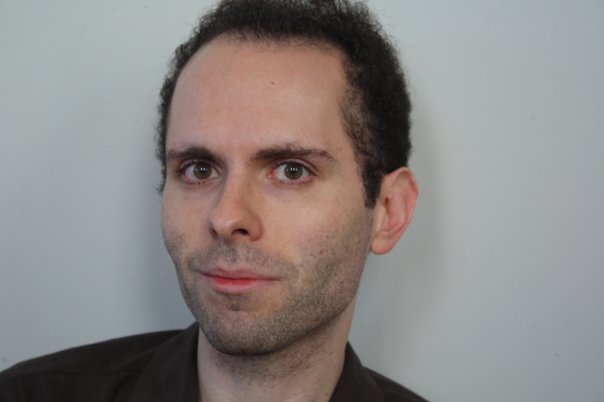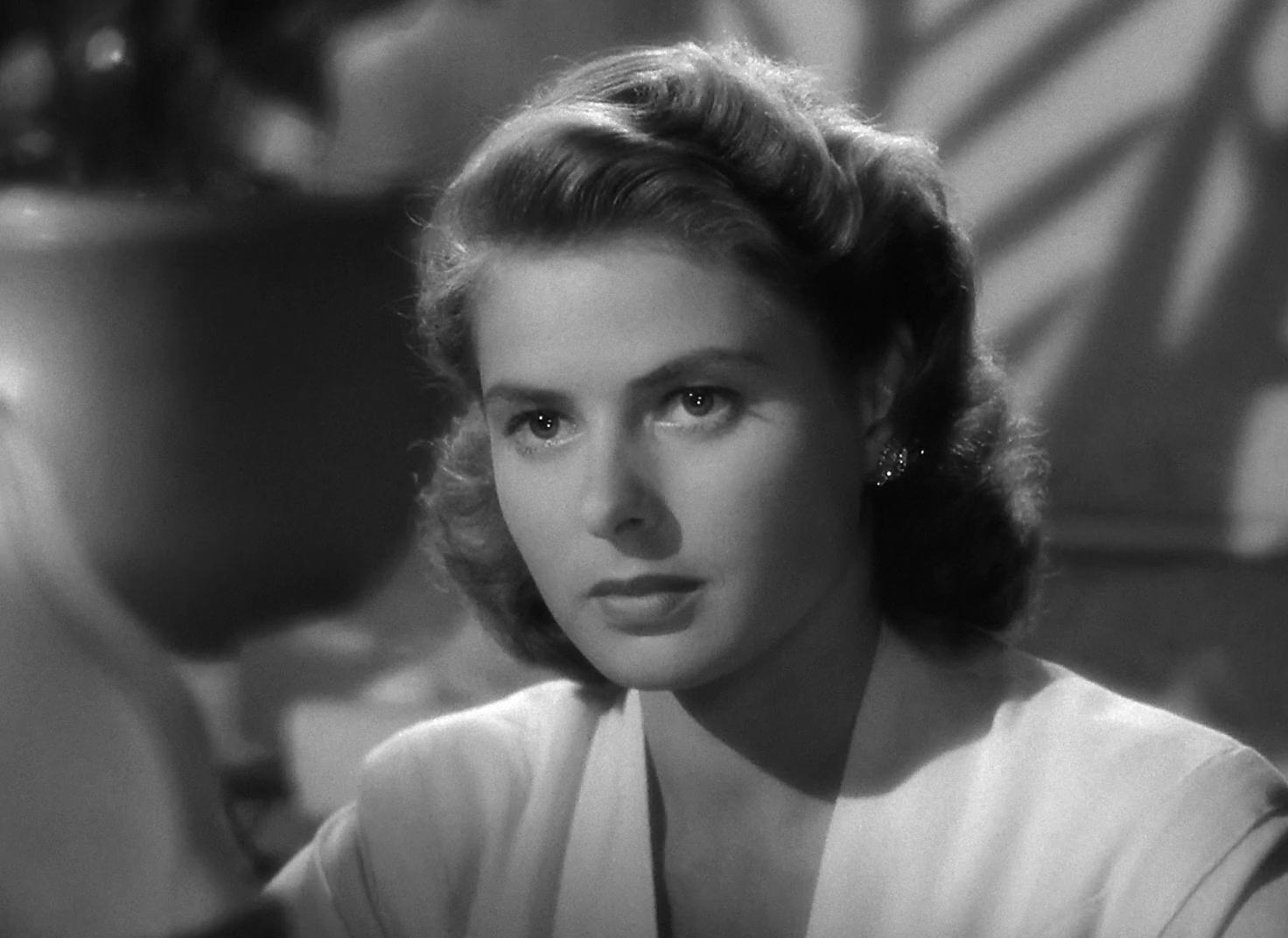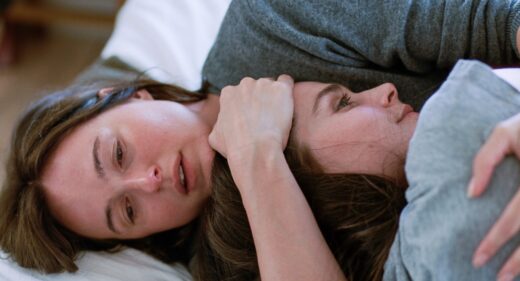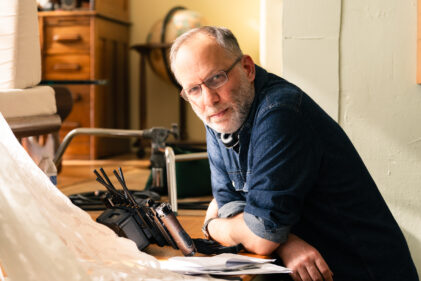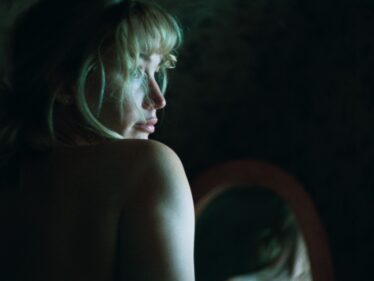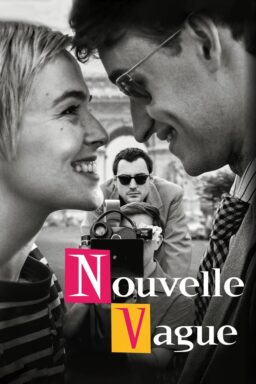Ingrid Bergman was one of the major actresses of the twentieth century and she remains an icon in film culture, her smile still radiant and bursting from the screen, her beautiful face filling with doubts and pre-occupations in extreme close-ups for Alfred Hitchcock, George Cukor, Roberto Rossellini, Ingmar Bergman and many other top film directors. To celebrate the hundredth anniversary of her birth in Sweden in 1915, the Museum of Modern Art and the Brooklyn Academy of Music have programmed a dual retrospective that will be showing practically all of Bergman’s important movies, starting on August 29 and running through most of September.
Some of these movies will be introduced at MoMA by Bergman’s three daughters—Pia Lindstrom, Ingrid Rossellini, and Isabella Rossellini—and Isabella will also be doing a stage tribute to her mother with Jeremy Irons at the BAM Howard Gilman Opera House on September 12th. I recently spoke to all three of them about what Bergman was like as a person, as a mother, and as an actress. Unlike the aggrieved offspring of some other movie stars, these are sophisticated, warm, intelligent, understanding women, and all three of them have musical voices and infectious laughs that echo the sound and the spirit of Bergman.

Lindstrom was only 10 years old when Bergman fell in love with Roberto Rossellini as they were working on the film “Stromboli” (1950) in Italy. Both Bergman and Rossellini were married to other people when she had a child with him out of wedlock, their son Roberto (who today works as a businessman in Paris), and this created a scandal so large that Bergman was denounced in florid terms on the floor of the US senate. “She just…did what she wanted to do!,” says Lindstrom, who has made her career as a show business journalist. Contact with her mother for Lindstrom was broken off for several years while Bergman worked with Rossellini and had two more children born as fraternal twins, Ingrid, who has taught Italian literature at NYU, and Isabella, who went into acting herself. Consequently, each of them had somewhat different experiences with Bergman.
“For the tribute to Mama that we’re doing on stage, I am using her autobiography, which is out of print, to celebrate her in her own words,” says Isabella. “We are using a selection of passages from that, with her letters and diary entries. And we will be using the movies that she took herself, which go all the way back to “Joan of Arc” (1948) and before. Because you know her father was a photographer, he rented a camera and he was taking film of her as an infant, which was very unusual for that time.”
“Her father was a painter and photographer, and he wanted her to be an opera singer, and so he took her to the opera, but she had no voice for it,” says Ingrid. “Going to the opera is what made her fall in love with the theater. In the book she wrote, she doesn’t say much about her work. I’m always going back to her book and wondering what she has to say about playing Hedda Gabler or something like that, but there’s very little.”
“Her father was always taking photos of her, and so she looked at her father through a lens, and that was how she got affection,” says Lindstrom. “And so she didn’t have to put on a false face for the camera. She had a facility to express emotion in front of a camera. It was in the planes of her face, and she had an inner glow, the emotion would be there.”

“Her father had a strong influence on her,” says Ingrid. “Her mother died early, and so unfortunately we don’t know too much about her mother. Other people, maybe they have only a photo or two of their mother, but if I miss her, I can spend hours watching her on the screen! I like the films I picked for the retrospective very much, but it’s hard to pick a favorite. I love that Mama didn’t want to play the good girl in “Dr. Jekyll and Mr. Hyde” (1941) but she wanted to play the bad girl instead—that shows her independent mind. I find it easier to watch films with my mother when she was young, because I’m more detached. When it’s something like “Autumn Sonata” (1978), that’s when I knew her, and so it’s more upsetting to me to see that.”
“I chose “Autumn Sonata” for the retrospective because it’s about her and it’s about Ingmar Bergman and his wives and ladies, and it’s about a dilemma that we still talk about,” says Lindstrom. “If you have a gift, are you not meant to use it? Are you supposed to stay home with your children and raise the family instead? In other generations, if you had resources, you hired a nanny, which I had growing up, but we called her a governess. Mummy didn’t find staying at home that fascinating. And I remember she would say that in Italy, they also had someone else to take care of the children.” Isabella remembers that she and her sister had a wet nurse. “Which was very unusual, that’s like something from centuries back,” she says. “But in Italy there was no milk for the babies then. And so Mama got us a wet nurse, and she was completely delighted by that. She stayed in touch with our wet nurse and sent her Christmas cards for years.”
“I like “Autumn Sonata,”” says Lindstrom. “I think it’s a great performance, and at that point you are past being just stunned by her physical beauty. You see much more. In her earlier films, her beauty was what you saw first and you just went, ‘Ah!’ Even when she played in the theater later on, I think somebody said that she could have read the phone book and everybody would be hushed just looking at her.”
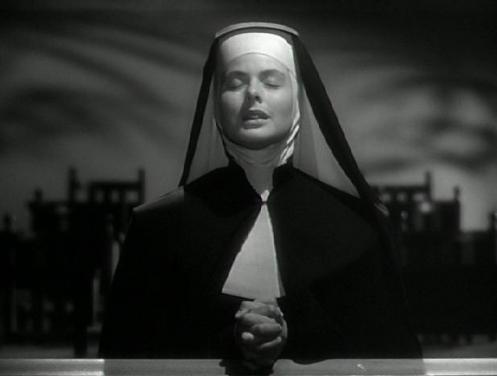
“I didn’t see her films growing up,” says Lindstrom. “I didn’t see the Swedish films until much later. I think they let me see “The Bells of St. Mary’s” (1945) because they felt that was appropriate. And I was in “Joan of Arc” as an extra. She always wanted to be there on the set because she was quite infatuated with the director of that, Victor Fleming, who was very handsome.”
“We had our bad moments,” says Lindstrom. “But people make a decision about how they accept other people’s behavior. We had our difficulties, but you just realized that this is who she was. You have a choice…I don’t understand these people who have this desire to destroy their parents. You have someone who everyone thinks is so great and then you want to expose their Achilles’ heel? Nobody would be interested in that if your parent wasn’t famous. Whatever discomfort or sorrow we had, we kept it to ourselves.”
“Mama had a passion for acting, and the theater is what she liked,” says Ingrid. “But, like my father, she never talked about her work when she got home, which is in a way admirable. At home, she was Mom, and we’d talk about needing new shoes or things like that! I was with her when she did the Eugene O’Neill play “More Stately Mansions” on Broadway, and so I saw how she needed time to herself before the performance. She would put her make-up on and get ready and have a kind of Zen moment. And then she would go on stage and she was another person.”

“Once, I remember I went on stage with her when the theater was empty and I asked her how she could do what she did,” says Ingrid. “I said I couldn’t do that, go on stage and have all those eyes on you. I’m very shy, and she was very shy, too, she was painfully shy. And she told me, ‘Because I am someone else when I go on stage, I’m another person.’ She was so shy, and she was insecure about things she didn’t know, or things that were not her job. She was completely natural. She just intuitively did it. She was very good at understanding people, and that’s another form of intelligence. She’d talk to someone and in two seconds, she’d have it, she’d understand them. It’s like another form of language and expression.”
One of the things that really distinguished Bergman was her ability to fluently act in different languages. “She played on stage in London and in France,” says Lindstrom. “In school, I know she learned German. I think she spoke English so well maybe because Swedish is so open in the throat. There are a lot of Swedish opera singers because there is a very high and low cadence to Swedish. The director George Seaton had a sister named Ruth Roberts, who taught her English and was her dialect coach on her films.”
“With languages, she learned Swedish and German, and then English and then Italian, and I think it was…it was about just forgetting about the grammar,” says Ingrid. “When she was first in Italy, they talked and they neglected her, because in Italy you just talk. And she sat there and sat there, and then finally, boom! She understood what they were saying. When she spoke English, when she says a word like, ‘Yes,’ you can hear that little Swedish lilt, or the way she goes, ‘Ah!’ That’s very Swedish.”
“I’m sure when she was in Hollywood she worked on every word to make it right, but when she was interviewed in English later you can hear her accent more, when she’s more relaxed,” says Ingrid. “When she rehearsed her parts, she wanted it all to be perfect. I can remember sitting and hearing her in the other room memorizing her lines, going over them and over them. She was a perfectionist, and yet it was absolutely instinctual when she came to do it. When she made movies with my father, she said she was tremendously frustrated, and yet in his films she doesn’t seem like she’s lost. It is the character she is playing that is lost.”

“I chose “Under Capricorn” (1949) and “Elena and Her Men” (1956) because I haven’t seen them myself, and they are films by major directors, Hitchcock and Jean Renoir, and although they were unsuccessful at the time, when you have a retrospective you should see things like this, too,” says Isabella. “Everybody will always be seeing or talking about “Casablanca” or “Gaslight” (1944), but these are major filmmakers she was working with, and so there must be something there for us in them.”
“Hitchcock himself invented certain ways of editing, with his wife Alma, but they were frustrated with editing, with the need to cut,” says Isabella. “In “Under Capricorn” he wanted to see if he could make it more like a play, or to play out at length. Editing is an artistry, but it can also be a limitation. I can remember my father going on about not being able to do what he wanted to do, and of course now you can do so much electronically. But about the quality of Mama’s performance in long takes or short takes, that is maybe a question more for a critic than for me.”
The films that Bergman made with Rossellini—“Stromboli,” “Europe ‘51” (1952) and “Voyage in Italy” (1954)—were not well received in their time, but they have won many admirers in the years since, so much so that young cinephiles today are often more familiar with those Rossellini films than with her Hollywood work. When I say this to Isabella, she says, “I love to hear that! That the young people know the Rossellini films, and maybe not so much “Casablanca”? Well, you know, maybe in film classes they show some of father’s movies, or De Sica’s “Bicycle Thieves” (1948), and maybe the classes think that “Casablanca” is so famous it doesn’t need to be shown. But that’s fantastic. You see, if you live long enough you see things start to change.”
“I chose to show “Casablanca” because that is her signature film that even young people have at least heard of, it’s a cult favorite,” says Lindstrom. “Now, as you probably know, it was not a movie she was particularly fond of. She had no relationship with Bogart on the set whatsoever. But this is the film that has been remembered through the generations, and I have some info on “Casablanca” that I can share with the audience, because I was there.”

All three of her daughters have very definite ideas about Bergman’s legacy, and her special qualities as a person and as an actress. “Mama was never judgmental,” says Ingrid. “She was orderly, practical, efficient. With her, it was a little like a metamorphosis…if she was in a different country or playing a different part, it was…what is the word in English? A chameleon. She says in her book that she was lucky, but I think part of that was that she adapted so easily.”
“What’s extraordinary and unique about my mother is that she means something in so many different countries,” says Isabella. “Katharine Hepburn and Bette Davis, they mean something in America, mainly, but they didn’t have the European films. Mother means something in Sweden, in Italy, in France, in London, and in America. If you think of her, you think of her in all those different countries. She was once asked, ‘Where are your roots?’ And she said, ‘I don’t have any!’ Can you imagine?”
“She was before her time, to be so independent,” says Ingrid. “But she was lucky that her father was always filming her and she was so comfortable in front of the camera…that was very unusual for someone born in 1915! She was determined to be herself and to be natural, and she was so committed to her work. She would always say it is a job like any other, and she would put it in practical terms. And part of being natural and not being artificial or false was when she got older, she didn’t have any kind of plastic surgery. When she got older, she looked older, and she had no vanity about it. She just said, ‘Now I will play parts according to my age, I will play an old witch.’ We have such trouble now accepting age. My sister Isabella and I don’t do anything to our faces either, and I think it’s because we know our parents would scream at us if we did.”
“She was so original and independent, but in a gentle, natural way,” says Ingrid. “She
would always say, ‘People have to make sense.’ She would immediately detect if a person she was talking to was in any way artificial, and she didn’t like that. She was honest and authentic. And so people watch her on the screen and they are touched by her, because she doesn’t seem aware of her beauty.”
“My mother was not theatrical in her home life,” Lindstrom says. “She was strong-willed, which is maybe partly theatrical. I found her fun, she was fun to be around, and playful, and demanding. Maybe that was the Scandinavian in her. There were rules that she followed, and you needed to follow them if you were with her. For instance, I would always let her walk ahead of me through a door. You know, you wouldn’t cry or yell, ‘I want some ice cream!’ with her, you just wouldn’t do that. That was not her role in life, maternity. That was not her forte.”
But Isabella has a different perspective, perhaps because she saw her mother through the eyes of her father Roberto. “Father always said she was so loud that she didn’t need a telephone!” says Isabella. “And yes, she was like that at home. It wasn’t so much that she spoke loudly, but her voice had a certain pitch, so that she could be heard in the back of the theater, and yes, she was like that at home, too.”
All three of her daughters say that Bergman was shy, but she had other capacities within her. “You can be shy and yet have something else there, and that can co-exist,” says Isabella. “For instance, I just finished shooting a film for David O. Russell, and Robert De Niro is the star. Now, De Niro is a very shy man. And yet he plays in the film with the big character and everything and he says, ‘Fuck!’ and things like that. And that isn’t like him at all. And that reminded me so much of my mom, that shyness and then also the capacity for pretending something else.”
“When she was dying of cancer, her arm was really swollen, this was when she was making “A Woman Called Golda” for TV (1982),” says Ingrid. “When she was not working and she was outside, she would cover that arm, and the photographers wanted photos. You know, they want to take bad pictures of you when you’re dying. And it breaks my heart, because she understood that, and she just said, ‘Fine,’ and she uncovered the arm for them. ‘You want to see me dying? Fine.’ And that’s what her life was all about, I think. She had a kind of wisdom, and a kind of acceptance of things.”
